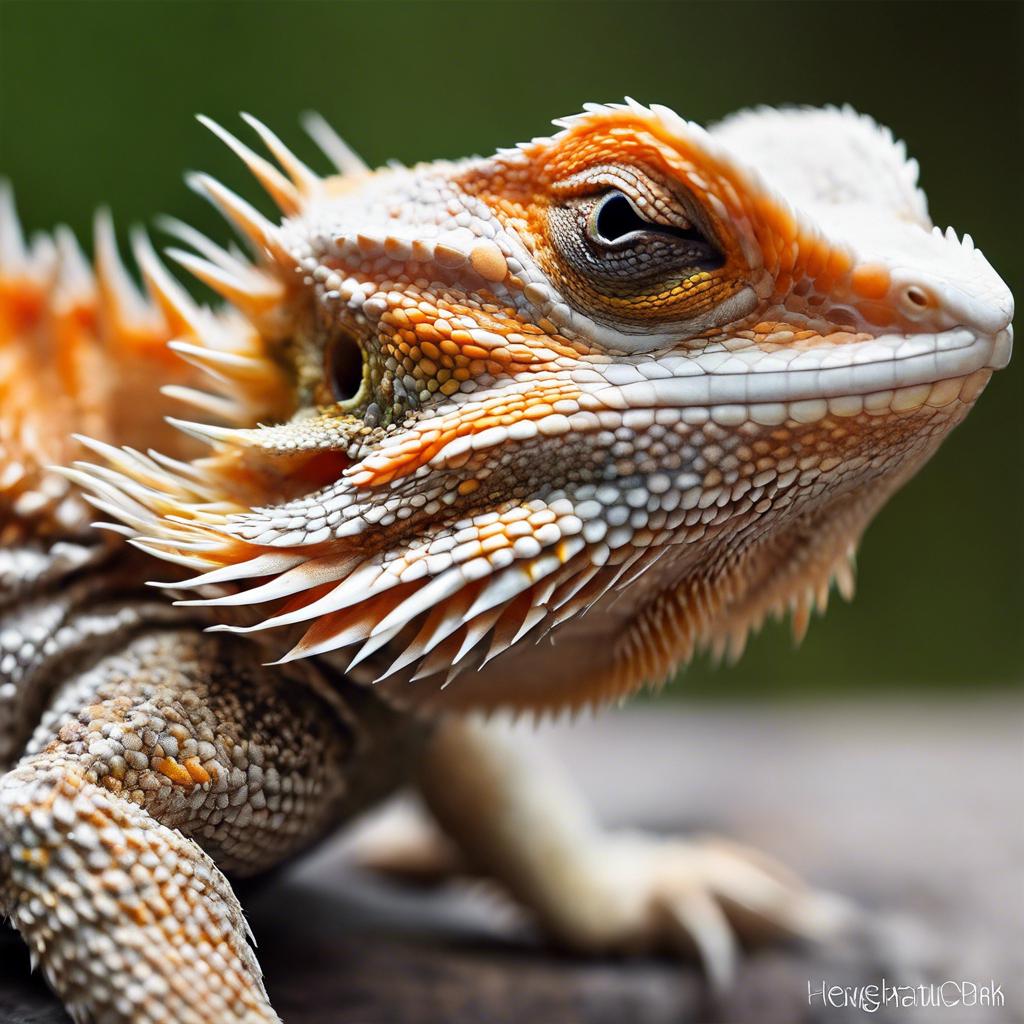Bearded dragons, scientifically known as Pogona, are a type of lizard native to Australia. They have become increasingly popular as pets due to their docile nature and unique appearance. Bearded dragons get their name from the spiky beard-like scales under their chin, which they can puff up when they feel threatened or excited. These reptiles have been kept as pets for several decades, but their popularity has soared in recent years.
Bearded dragons make great pets for several reasons. Firstly, they are relatively easy to care for compared to other reptiles. They have simple dietary requirements and are generally hardy creatures. Secondly, they have a calm and friendly temperament, making them suitable for both experienced reptile owners and beginners. Lastly, bearded dragons are highly interactive and can form strong bonds with their owners. They enjoy being handled and can even be trained to perform simple tricks.
Key Takeaways
- Bearded dragons are popular pets due to their docile nature and unique appearance.
- Proper housing and habitat requirements include a spacious enclosure with appropriate substrate and hiding spots.
- Temperature and lighting needs are crucial for the health and well-being of bearded dragons, with a basking spot and UVB lighting necessary.
- A varied diet of insects, vegetables, and fruits is recommended, with calcium and vitamin supplements added.
- Bearded dragons require access to clean water and may also benefit from occasional misting or soaking.
Housing and Habitat Requirements
When it comes to housing a bearded dragon, it is important to provide them with a spacious and secure enclosure. A 40-gallon tank is the minimum size recommended for an adult bearded dragon, but larger enclosures are preferable. The enclosure should have a secure lid to prevent escape and should be made of glass or plastic to maintain proper temperature and humidity levels.
The substrate used in the enclosure should be safe and easy to clean. Options such as reptile carpet, paper towels, or ceramic tiles are ideal choices. Avoid using loose substrates like sand or wood chips, as these can cause impaction if ingested.
Decor and hiding places are essential for a bearded dragon's well-being. Provide branches, rocks, and other climbing structures for them to explore and bask on. Hiding spots such as caves or hollow logs should also be provided to give them a sense of security.
Temperature and Lighting Needs
Bearded dragons are ectothermic, meaning they rely on external heat sources to regulate their body temperature. It is crucial to provide them with a temperature gradient within their enclosure. The basking spot should be around 95-105°F (35-40°C), while the cooler side of the enclosure should be around 75-85°F (24-29°C). This temperature gradient allows the bearded dragon to thermoregulate and move between different temperature zones as needed.
Proper lighting is also essential for the health of a bearded dragon. They require both UVA and UVB lighting. UVA lighting helps stimulate natural behaviors and promotes overall well-being, while UVB lighting is crucial for the synthesis of vitamin D3, which is necessary for calcium absorption.
It is recommended to use a full-spectrum UVB bulb specifically designed for reptiles. The bulb should be placed within 12-18 inches of the basking spot and should be replaced every 6-12 months, as the UVB output diminishes over time.
Diet and Feeding Recommendations
Bearded dragons are omnivorous, meaning they eat both plant matter and insects. Their diet should consist of a variety of leafy greens, vegetables, fruits, and live insects. Leafy greens such as collard greens, mustard greens, and dandelion greens should make up the majority of their diet. Vegetables like squash, bell peppers, and carrots can also be offered.
Insects such as crickets, mealworms, and dubia roaches are important sources of protein for bearded dragons. They should be dusted with calcium powder before being offered to ensure proper nutrition.
A feeding schedule for adult bearded dragons typically consists of offering insects every other day and vegetables daily. Juvenile dragons require more frequent feedings, with insects offered daily and vegetables every other day.
Supplements are also necessary to ensure that a bearded dragon receives all the necessary vitamins and minerals. Calcium powder with vitamin D3 should be dusted onto insects before feeding, and a multivitamin supplement can be given once or twice a week.
Hydration and Watering Guidelines
While bearded dragons obtain most of their hydration from the food they eat, it is still important to provide them with access to fresh water. A shallow dish of water should be available in the enclosure at all times. However, bearded dragons are not known to drink from standing water, so it is more likely that they will use the water for soaking or bathing.
In addition to a water dish, regular misting or spraying of the enclosure is recommended to provide humidity and allow the bearded dragon to drink droplets of water. Misting should be done at least once a day, preferably in the morning.
Signs of dehydration in a bearded dragon include sunken eyes, wrinkled skin, and lethargy. If any of these signs are observed, it is important to increase hydration immediately and consult a veterinarian if necessary.
Handling and Socialization Tips

Proper handling is important for the well-being of a bearded dragon. When picking up a bearded dragon, it is best to scoop them up from underneath rather than grabbing them from above. This mimics how they would be picked up by their mother and helps them feel secure.
Bearded dragons enjoy being handled and can become quite tame with regular interaction. It is important to handle them gently and avoid any sudden movements that may startle them. Regular handling helps them become accustomed to human contact and can prevent stress-related behaviors.
Signs of stress in a bearded dragon include puffing up their beard, hissing, or trying to escape. If any of these signs are observed, it is best to give the bearded dragon some space and try again later.
Health and Wellness Considerations
Regular health check-ups are important for the overall well-being of a bearded dragon. It is recommended to find a reptile veterinarian who is experienced in treating bearded dragons and schedule annual check-ups. During these check-ups, the veterinarian will examine the bearded dragon for any signs of illness or disease and may recommend further tests if necessary.
Signs of a healthy bearded dragon include bright and alert eyes, smooth skin, and a healthy appetite. They should have a good body condition, with a healthy weight and muscle tone.
Proper hygiene is also important for maintaining the health of a bearded dragon. The enclosure should be cleaned regularly to remove any waste or uneaten food. The water dish should be cleaned and refilled daily, and any soiled substrate should be replaced promptly.
Common Diseases and Medical Issues
Bearded dragons are susceptible to several common health issues. One of the most common is metabolic bone disease, which is caused by a lack of calcium and vitamin D3 in their diet. Symptoms of metabolic bone disease include soft or deformed bones, tremors, and difficulty walking. Treatment involves correcting the diet and providing proper supplementation.
Respiratory infections are another common issue in bearded dragons. Symptoms include wheezing, discharge from the nose or mouth, and lethargy. Respiratory infections can be caused by improper temperature or humidity levels in the enclosure. Treatment typically involves antibiotics prescribed by a veterinarian.
Parasites such as mites or worms can also affect bearded dragons. Regular fecal exams should be conducted to check for parasites, and treatment should be administered if necessary.
Prevention is key when it comes to common diseases in bearded dragons. Providing a proper diet, maintaining proper temperature and humidity levels, and practicing good hygiene can help prevent many health issues.
Breeding and Reproduction Information
Breeding season for bearded dragons typically occurs during the spring and summer months. Male bearded dragons will display courtship behaviors such as head bobbing and arm waving to attract a female. Once a female is receptive, mating will occur.
After mating, the female will lay a clutch of eggs. It is important to provide a suitable nesting area for the female, such as a box filled with moist sand or vermiculite. The eggs should be carefully removed and placed in an incubator set to the appropriate temperature and humidity levels.
The incubation period for bearded dragon eggs is typically around 60-70 days. Once the eggs hatch, the baby bearded dragons should be kept in a separate enclosure with appropriate heat and lighting. They should be fed a diet of small insects and finely chopped vegetables.
Conclusion and Additional Resources
In conclusion, bearded dragons make great pets due to their docile nature, ease of care, and interactive personalities. Providing them with a suitable enclosure, proper temperature and lighting, a balanced diet, and regular handling and socialization will ensure their health and well-being.
For additional resources on caring for bearded dragons, there are several reputable websites, books, and online forums dedicated to reptile care. These resources can provide further information on specific topics and allow owners to connect with other bearded dragon enthusiasts to share experiences and tips. Owning a bearded dragon can be a rewarding experience, and with proper care and attention, these fascinating reptiles can thrive in captivity.
If you're looking for a comprehensive care sheet for bearded dragons, you'll definitely want to check out the Bearded Dragon Care Sheet PDF provided by Reptile Wizard. This informative guide covers all aspects of bearded dragon care, from habitat setup to feeding and health maintenance. It's a must-have resource for any bearded dragon owner or enthusiast. For more reptile-related articles and information, be sure to visit Reptile Wizard's blog section. One interesting article you might find helpful is “Can Bearded Dragons Eat Black Beans?” which explores the dietary options for these fascinating creatures.
FAQs
What is a bearded dragon?
A bearded dragon is a type of lizard that is native to Australia. They are popular pets due to their docile nature and ease of care.
What do bearded dragons eat?
Bearded dragons are omnivores and eat a variety of insects, vegetables, and fruits. Some common foods include crickets, mealworms, kale, and strawberries.
How often should I feed my bearded dragon?
Adult bearded dragons should be fed once a day, while juveniles should be fed twice a day. It is important to provide a balanced diet and not overfeed.
What kind of habitat does a bearded dragon need?
Bearded dragons need a large enclosure with a basking area, a cooler area, and a hiding spot. The enclosure should also have a UVB light and a heat lamp to provide the necessary temperature and lighting.
How often should I clean my bearded dragon's enclosure?
The enclosure should be spot cleaned daily and fully cleaned once a month. This includes removing all substrate, cleaning the enclosure with a reptile-safe cleaner, and replacing the substrate.
Do bearded dragons need to be handled?
Bearded dragons can be handled, but it is important to do so gently and not too often. They may become stressed if handled too much or too roughly.
What are some common health issues for bearded dragons?
Some common health issues for bearded dragons include metabolic bone disease, respiratory infections, and parasites. It is important to take your bearded dragon to a veterinarian if you notice any signs of illness.

